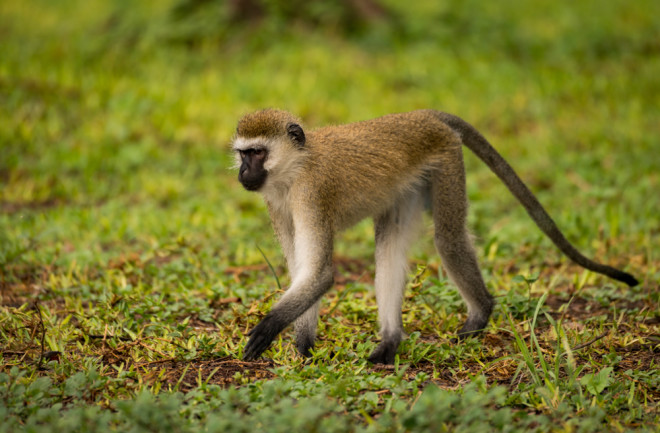The monkey tail is one of nature’s most marvelous tree-top tools. Balancing their bodies as they bolt through the branches, the tail is an advantageous adaptation for monkeys. But why wasn’t the tail beneficial for our ancient ancestors, the apes? Somewhere along the evolutionary timeline, apes lost their tails, and in turn helped humans become humans.
How this happened has intrigued a slew of scientists over the years, including Bo Xia, a geneticist at the Broad Institute, an independent institution tied to the Massachusetts Institute of Technology and Harvard University.
Searching for the origins of taillessness in apes — the group that today contains chimps, gorillas, humans, and more — Xia and colleagues compared the genes of tailless apes and tailed monkeys, identifying at least one of the genetic mutations that led to the tail’s loss, in a new study published in Nature.
“Our study begins to explain how evolution removed our tails,” Xia says in a statement, “a question that has intrigued me since I was young.”
Read More: Humanity’s Early Ancestors Were Upright Walking Apes
Why Did Apes Lose Their Tails?
Around 25 million years ago, the apes split from the monkeys and cast off their tails. Evolving fewer and fewer tail vertebrae throughout the course of this split, their fifth, arboreal-adapted appendage eventually transformed from a tail to a tailbone.
Xia and colleagues theorized that the lack of tails in apes likely improved their locomotion. In fact, some scientists say that the absence of a tail simplified life on the ground for our ancient ancestors, paving the way for the upright, bipedal movement of modern humans.
As they split off from the monkeys, the apes started to transition to an increasingly terrestrial, rather than arboreal, lifestyle. Instead of running along the tops of branches on all fours, they spent their time swinging beneath branches in an orthograde, or upright posture, including sitting, standing, or walking on the ground.
This orthograde posture likely allowed them to grab fruits and foliage with greater agility, with a tail only impeding this new mechanism of movement.
“It has long been speculated that tail loss in hominoids,” including apes and humans, “contributed to orthograde and bipedal locomotion, the evolutionary occurrence of which coincided with the loss of the tail,” Xia and colleagues write in their paper. “The specific evolutionary pressures relating to the loss of the tail in hominoids are not clear, although they are probably involved in enhanced locomotion in the transition to a non-arboreal lifestyle.”
Read More: If Humans Evolved from Apes, Why Do Apes Still Exist?
How Did Apes Lose Their Tails?
According to the new paper, a genetic mutation in our ancient ancestors is to thank for our lack of tail. At the outset of their search, Xia and colleagues suspected that the apes shed their tails through the mutation of specific genes. As to the identity of these specific genes, there were plenty of possibilities, since there are around 100 that are thought to impact the length of the tail in mice alone.
Studying the iterations of these genes in 21 separate species, including 6 apes and 15 monkeys, the team found one mutation — an insertion of genetic code in the TBXT gene — present in the former, including humans, and not present in latter.
Testing their identification, the team then inserted this mutation into developing mice before their births with CRISPR technology to see whether it would impact their tails. Born tailless, the modified mice suggest that the TBXT mutation was one of the genetic tweaks behind taillessness.
Read More: How Closely Related Are Humans to Apes?
Article Sources
Our writers at Discovermagazine.com use peer-reviewed studies and high quality sources for our articles, and our editors review for scientific accuracy and editorial standards. Review the sources used below for this article:
The American Journal of Biological Anthropology. Primate Tails: Ancestral State Reconstruction and Determinants of Interspecific Variation in Primate Tail Length
Nature. On the Genetic Basis of Tail-Loss Evolution in Humans and Apes
Nature. Palaeontological Evidence for an Oligocene Divergence Between Old World Monkeys and Apes
Cellular and Molecular Life Sciences. The Vertebrate Tail: A Gene Playground for Evolution
Journal of Human Evolution. Bipedal and Quadrupedal Locomotion in Chimpanzees
Journal of Anatomy. Why Are There Apes? Evidence for the Co-Evolution of Ape and Monkey Ecomorphology
Science. The Evolution of Hominoid Locomotor Versatility: Evidence From Moroto, A 21 Ma Site in Uganda

